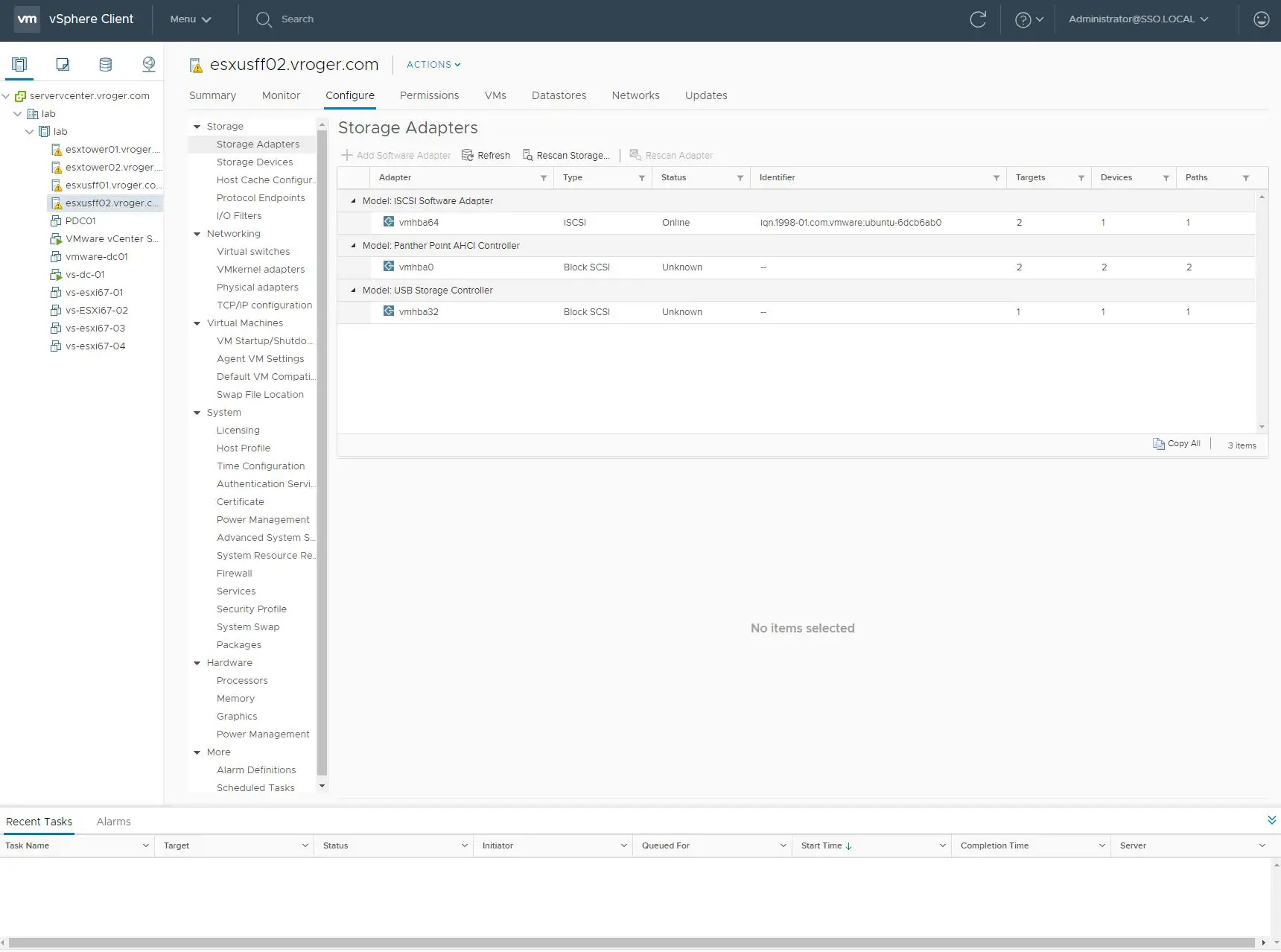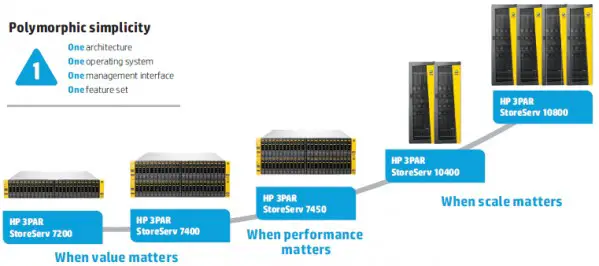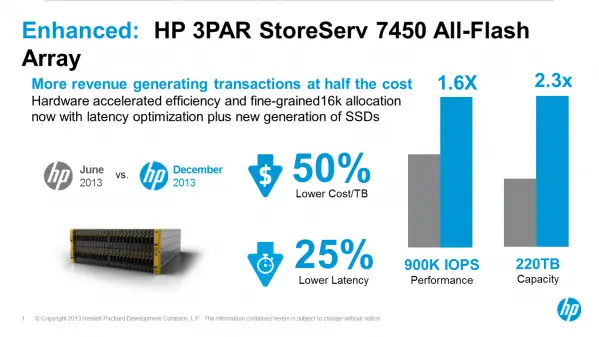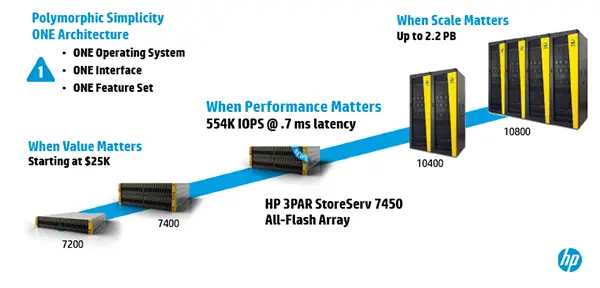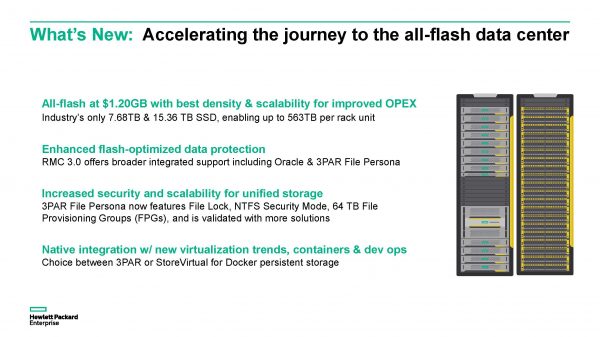
Notes of interest from the HPE Storage keynote and announcements:
Massive new drives – 7.68TB and 15.36TB drives for the 3PAR StoreServ arrays. The new drives are enabled by the 3D SSD technology pioneered by Samsung. The drives also benefit from Adaptive Sparing in the 3PAR OS that allows for additional spare capacity to be tapped for sparing by the array, rather than being reserved.
The massive new drives allow amazing density in the 3PAR arrays. Each disk shelf can accommodate 368 TB of RAW capacity and HP is saying with the magic of thin provisioning and thin dedupe, the density is 563TB of usable capacity per rack unit.
StoreOnce Recovery Manager Central 3.0 – The new release will allow application consistent protection for Oracle and for 3PAR File Personal. Recovery Manager Central leverages snapshots on the 3PAR array and then protects the snapshot data onto StoreOnce arrays. Once the initial snapshot/backup is protected, future backups only need to move difference blocks in between snapshots. All of this occurs directly between 3PAR and StoreOnce without third party software. A simple virtual appliance is deployed to drive this integration and can be tapped into by third party (or HPE) backup solutions.
3PAR File Persona Enhancements – HPE has added features like File Lock and NTFS Security mode to address specific needs of customers with file services. The File Provisioning Group limits have been increased to 64TB in size to accommodate much larger file space on a 3PAR array.
Native Container Integration – HPE has announced storage drivers for Docker to be able to natively talk to 3PAR and StoreVirtual over iSCSI. This will allow Docker to tap directly into storage and present it to containers and persist the storage over time.
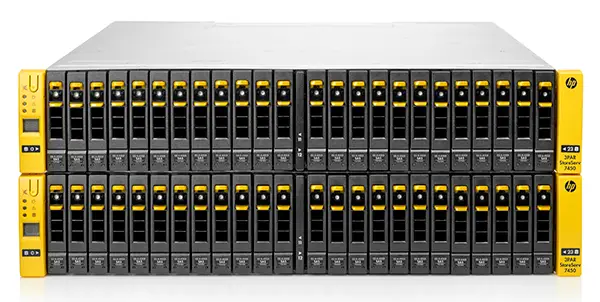
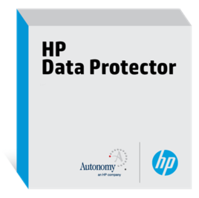 Without backup software to actually use Federated Catalyst, the technology itself doesn’t do much good, so my first question is when would Data Protector support Federated Catalyst. The good news is that Data Protector 8 and 9 will both support Federated Catalyst when it becomes generally available with the new 3.11 StoreOnce firmware.
Without backup software to actually use Federated Catalyst, the technology itself doesn’t do much good, so my first question is when would Data Protector support Federated Catalyst. The good news is that Data Protector 8 and 9 will both support Federated Catalyst when it becomes generally available with the new 3.11 StoreOnce firmware.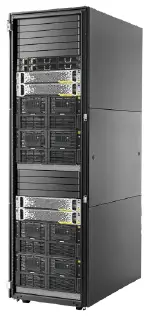 This week at HP Discover, HP announced a new Federated Catalyst feature for the StoreOnce family of disk to disk backup arrays. The new capability will allow backup administrators to make large Catalyst stores on a StoreOnce and allow for data to be striped across all the back-end service sets in the array. Federated Catalyst is available immediately on the StoreOnce B6500 line and will be coming in a few weeks to the StoreOnce B6200 line.
This week at HP Discover, HP announced a new Federated Catalyst feature for the StoreOnce family of disk to disk backup arrays. The new capability will allow backup administrators to make large Catalyst stores on a StoreOnce and allow for data to be striped across all the back-end service sets in the array. Federated Catalyst is available immediately on the StoreOnce B6500 line and will be coming in a few weeks to the StoreOnce B6200 line.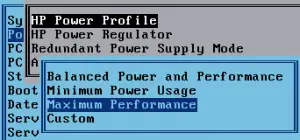 I checked this on my HP ProLiant blade servers and they were set to the default “Balanced Power and Performance.” The label doesn’t sound all that bad, but on further searching, this setting enabled the dynamic power management within a server. With this enabled, the CPU’s seemed to be powering down and taking additional time to power up when demand from vSphere increases.
I checked this on my HP ProLiant blade servers and they were set to the default “Balanced Power and Performance.” The label doesn’t sound all that bad, but on further searching, this setting enabled the dynamic power management within a server. With this enabled, the CPU’s seemed to be powering down and taking additional time to power up when demand from vSphere increases.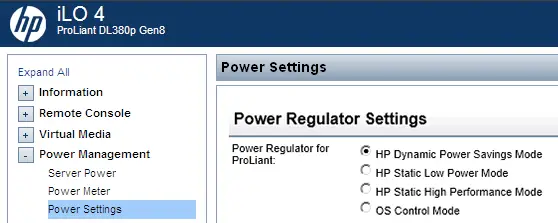
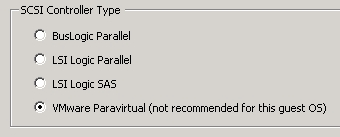 VMware unanimously makes the recommendation to the the Paravirtualized SCSI adapters within guest OSes when running business critical apps on vSphere in all the courses linked above. Paravirtualized SCSI adapters are higher performance disk controllers that allow for better throughput and lower CPU utilization in guest OSes according to
VMware unanimously makes the recommendation to the the Paravirtualized SCSI adapters within guest OSes when running business critical apps on vSphere in all the courses linked above. Paravirtualized SCSI adapters are higher performance disk controllers that allow for better throughput and lower CPU utilization in guest OSes according to 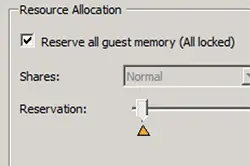 VMware recommends reserving the entire memory allotment for virtual machines running business critical apps. This ensure no contention where high performance applications are concerned. vSphere 5 and higher with virtual hardware version 8 or higher has a checkbox that allows for reserving the entire allotment of vRAM, even as allocations change.
VMware recommends reserving the entire memory allotment for virtual machines running business critical apps. This ensure no contention where high performance applications are concerned. vSphere 5 and higher with virtual hardware version 8 or higher has a checkbox that allows for reserving the entire allotment of vRAM, even as allocations change.